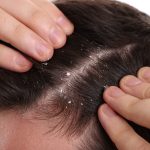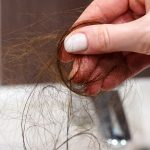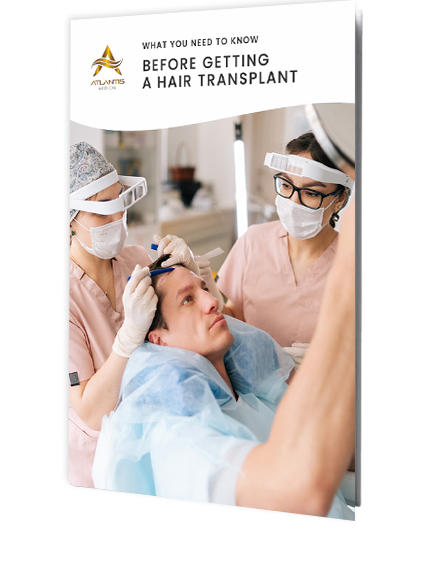The Truth About Postpartum Hair Loss: When Does It Start and How Long Does It Last?
- October 13, 2025
- Dr. Vikram Jayaprakash
Last updated on October 27, 2025
Table of Contents
ToggleUnderstand the Link Between Hormones and Postpartum Hair Loss
Many new mothers expect changes in sleep, energy and routine after giving birth, but one of the more unexpected changes is shedding of hair. It often begins suddenly and can feel worrying, especially when larger amounts of hair appear on the brush or in the shower. The natural questions many women ask are ‘When does postpartum hair loss start?’ and ‘How long does it usually last?’
Postpartum hair loss is common and, in most cases temporary, although the timing and duration can vary. Knowing what to expect, why it happens and when to seek advice can help make this stage easier to manage. In this blog, we will explain the causes, outline the typical shedding timeline and share treatment options available at Atlantis Medical for those who find regrowth slower than expected.
What Causes Postpartum Hair Loss?
During pregnancy, high oestrogen levels keep hair in the growth phase for longer than usual. This often makes hair appear thicker. After childbirth, hormone levels return to their pre-pregnancy state, and many hairs shift into the resting (shedding) phase at the same time.
This process explains why hair loss after pregnancy is noticeable, even if it is temporary.
Other factors such as stress, reduced sleep and nutritional changes may also contribute to postpartum hair thinning. While this shedding can feel significant, in most cases, it reflects the body adjusting back to its usual cycle.
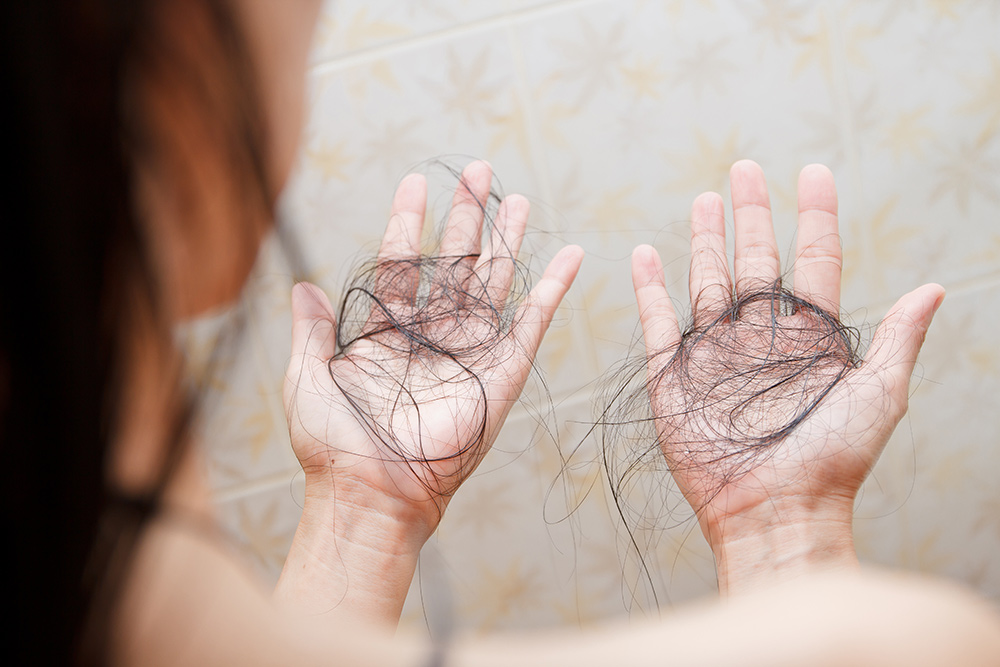
When Does Postpartum Hair Loss Start?
For most women, shedding begins around 2 to 4 months after giving birth. This timing is linked to the hair growth cycle, which takes a few months to reflect hormonal changes. Some women may notice hair loss earlier, while for others it may begin later, depending on individual health, stress and nutrition.
It is important to distinguish between normal postpartum shedding and other causes of hair loss. Conditions such as thyroid imbalance or iron deficiency can produce similar symptoms, so if hair loss seems excessive or unusual, professional assessment may be recommended.
How Long Does Postpartum Hair Loss Last?
Shedding usually lasts between 6 and 12 months. In many cases, the hair cycle gradually balances and regrowth becomes more noticeable as hormone levels stabilise. For some women, the process can continue a little longer, particularly if stress, dietary issues, or medical conditions are present.
If shedding continues beyond the first year, or if there are signs of patchy loss rather than generalised thinning, further investigation may be needed.
Supporting Hair Health at Home
There are practical steps that may help manage postpartum hair shedding and support healthier regrowth:
- Gentle hair care: Avoid excessive heat styling, chemical treatments, or tight hairstyles that put strain on the scalp.
- Balanced nutrition: Ensure adequate intake of protein, iron and vitamins, which all contribute to normal hair growth.
- Scalp care: Using mild products can help maintain a healthy scalp environment.
- Lifestyle factors: Rest, hydration and stress management can make a positive difference during recovery.
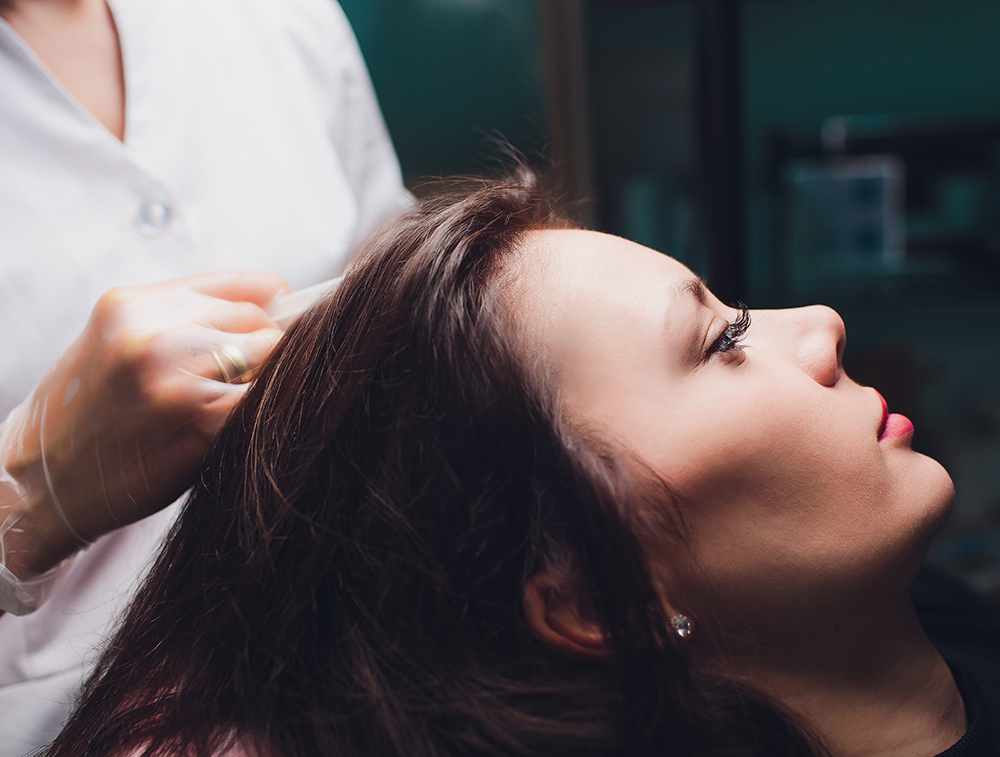
Treatment Options at Atlantis Medical
Postpartum hair loss usually improves on its own, but in some cases, regrowth may be slow or the shedding may feel prolonged. Atlantis Medical offers treatment pathways designed to support scalp health and stimulate follicles, including:
- Low-Level Laser Therapy (LLLT): A non-invasive approach that uses light energy to encourage healthy follicle activity.
- Growth Factor Therapy: Designed to stimulate the scalp and support the growth cycle where shedding has been significant.
- Scalp and nutritional support: Targeted scalp treatments and guidance on essential nutrients for stronger regrowth.
These options form part of a personalised plan, based on your individual needs and the underlying causes of your hair loss.
When to Seek Professional Advice
While postpartum hair shedding is a normal and temporary process, there are times when further assessment is useful. If hair loss lasts longer than 12 months, occurs in patches, or is accompanied by symptoms such as scalp irritation, it may be appropriate to seek medical advice. At Atlantis Medical, we can help determine whether the shedding is typical postpartum hair loss or related to another condition.
Conclusion
Postpartum hair loss is a common experience that usually begins a few months after childbirth and improves within the first year. Knowing when it starts, how long it lasts and what factors can influence it can help set realistic expectations. For women who find shedding persists or regrowth is slower than expected, professional treatments are available to support scalp health and restore balance to the hair cycle.
How to Book a Consultation
Booking your consultation is simple.
- Call us on (03) 9070 5234
- Contact us via our website
- Email us at enquiries@atlantismedical.com.au
- Or visit us at Level 2, 148 Glenferrie Road, Malvern, Vic 3144
Opening Hours
Mon – Fri: 8:30am – 5:00pm
Sat – Sun: Closed
Frequently Asked Questions
When does postpartum hair loss stop?
Postpartum shedding usually stops within six to twelve months as hormone levels stabilise and the hair cycle returns to its usual rhythm. If hair loss continues beyond this timeframe, further assessment may be recommended.
How long does postpartum hair loss last?
Most women notice increased shedding for several months, with the process often lasting up to a year. The duration can vary depending on overall health, stress and nutrition.
What causes postpartum hair loss?
The main cause is the drop in oestrogen levels after pregnancy, which triggers more hairs to enter the shedding phase at the same time. Stress, lack of sleep and reduced nutrient intake can make the process more noticeable.
How to prevent postpartum hair loss?
While postpartum shedding cannot be fully prevented, gentle hair care and balanced nutrition can support scalp and follicle health. Seeking advice early may help identify ways to reduce its impact.
What are the early signs of postpartum hair loss?
The first signs often appear as increased strands of hair on the pillow, in the shower or on the hairbrush. Some women may also notice overall thinning or a wider parting.
When is the most common time for postpartum hair loss?
Shedding most commonly begins two to four months after giving birth. This timing reflects the natural delay between hormonal change and the hair growth cycle.
Any surgical or invasive procedure carries risks. Before proceeding, you should seek a second opinion from an appropriately qualified health practitioner.

About the Author
Dr. Vikram Jayaprakash
Dr. Vikram Jayaprakash is the Clinical Director of Atlantis Medical, one of Melbourne’s premier hair restoration clinics. Trained at the University of Southampton Medical School, he spent over a decade working alongside Dr. Russell Knudsen at the renowned Knudsen Clinic before establishing his own practice. As one of only three doctors in Australia to hold Board Certification from The American Board of Hair Restoration Surgery and one of two to attain Fellowship status with the International Society of Hair Restoration Surgery, Dr. Jayaprakash brings unparalleled expertise to every procedure.
Categories
Categories
- Female Hair Loss (6)
- General (3)
- Hair Health (6)
- Hair Loss (12)
- Hair Loss Treatment (7)
- Hair Transplant (18)
- Male Hair Loss (8)
- Non Surgical Treatments (1)
- Scalp Health (3)



